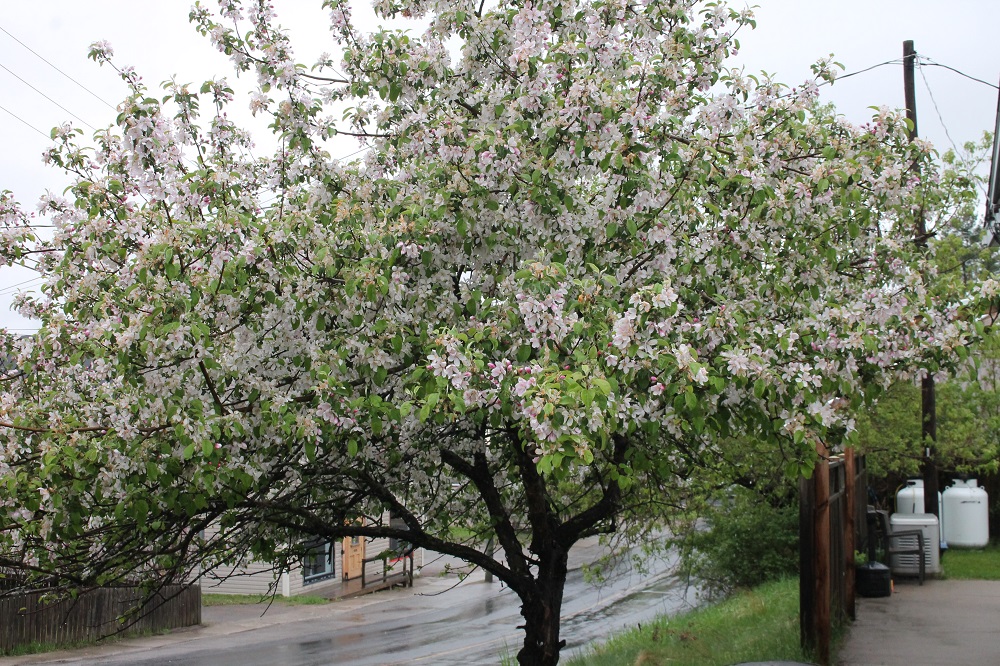When Luba Cargill moved to Haliburton County from Niagara-on-the-Lake about 20 years ago, she was surprised to see apple tree orchards in the Highlands.
“I thought, ‘this can’t be, because we have a very short growing season in Haliburton and the winters are very, very harsh’,” she recalls thinking.
It sparked a curiousity about how the apple trees managed to survive locally.
However, Cargill said she did not do anything with her intrigue for a long time until she read a story in The Highlander about U-Links Centre for Community-Based Research looking for ideas for its students. She offered up a study of the County’s apple trees.
In the meantime, she wanted to plant an apple tree of her own, so reached out to the Haliburton County Master Gardeners to find out what variety of apple tree grows best in the Highlands climate. She said the Master Gardeners were in the midst of their Heritage Apple Project, whereby they collected DNA samples from leaves of existing apple trees and sent them to the University of Guelph for identification. She said the Master Gardeners are still working on that project and also looking for orchards in the area.
U-Links then got back to her about a Haliburton County Apple Blossom Tour 2023. “I thought, ‘oh, good. Let’s go for it’.” That was in April.
“I got restarted and said, ‘you know, identifying trees by their blossoms might be the easiest way to find out where they are’.”
They have since produced a brochure with a driving map that encourages the public to follow the trail and be a part of the apple tree identification process. It has a number of stops, stretching from Highlands East, to Dysart et al, Minden Hills and Algonquin Highlands.
Meanwhile, the apple tree identification project, inspired by U-Links, is collecting information on Haliburton County apple orchards, both old and new, different species and locations.
If you have apple trees on your property, and would like to get on the location tour map, ask questions, or just provide information of photos, you can contact appletreeshaliburton@gmail.com
Cargill said the project has four stages.
The first is the apple blossom tour. The second is for arborists, foresters, and Master Gardeners to assist in improving productivity of existing apple trees. The third is planting new apple trees. And the fourth is an apple press for local apple tree owners and production of local apple cider, dried apples and other apple products.
“It helps with food security in the area,” Cargill said, referencing other projects, such as SIRCH’s apple sauce project. She added it’s good for the climate, as it reduces the need for shipping fruit from outside the area.”
Cargill said she’s received a “very positive” reaction to the tour, and the next stages. “So, I’m really happy about that. It’s neat.” She added with the other apple-related projects, “this is a nice extension of that.
“The idea is just for us to have better selfsufficiency in terms of food production, new opportunities for businesses in terms of product line, and also in terms of tourism.”
Cargill is excited to see where the research leads.
“I think the scientists and Master Gardeners, in the end, will probably figure it out. And, then, if we can find that variety, or that DNA, and continue with it somehow, we might have a really good apple industry in this area.”





